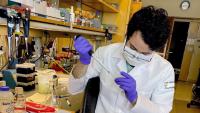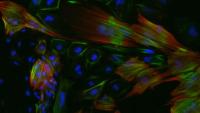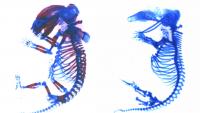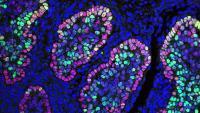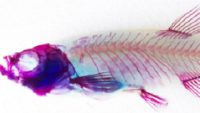Research Labs
-
The Aydogan Lab studies how cellular clocks control development, metabolism, and aging, revealing how biological timing affects health and disease.
-
Exploring Genomic Basis for Neurologic and Cardiovascular Disease using Reprogramming and Pluripotent Stem Cells
-
Our lab aims to understand how complex regulatory landscapes orchestrate the spatiotemporal dynamics of transcription during development.
-
The Berchowitz Lab employs genetic, cell biological, and biochemical approaches to understand the pathways and mechanisms underlying formation and clearance of amyloid-like assemblies.
-
The Cardoso lab focuses on mechanisms that regulate lung progenitor cell fate during lung development and the contribution of developmental mechanisms to disease pathogenesis and regeneration-repair.
-
Nutritional perception in stem-cell fate decision and tissue regeneration.
-
The Chio Lab aims to test the therapeutic principle that the specific redox dependencies of PDA cells can be exploited to target tumor cells while sparing normal tissues.
-
Our lab studies inherited skin and hair disorders using a classical genetic approach through identification and phenotyping of disease families, genetic linkage, gene discovery and mutation analysis.
-
The Ciccia Lab investigates how genome instability causes cancer and other genetic disorders.
-
The Gennarino Lab's overarching goal is understanding molecular mechanisms that underlie neurological and neuropsychiatric diseases and symptoms, in the hope of ultimately devising viable therapies.
-
The main focus of the Hobert Lab is to understand the gene regulatory control mechanisms that generate the astounding diversity of cell types in the nervous system.
-
Fitness sensing during organ and tissue growth: internal surveillance mechanisms that promote healthy organ development
-
The Karsenty Lab studies all aspects of skeletal biology and uses genetics, cellular, molecular and clinical physiological approaches to pursue several fundamental questions of bone biology.
-
The Lu Lab is interested in understanding basic mechanisms governing chromatin organization and access during normal and cancer development.
-
The Mann Lab studies the Hox family of transcription factors and the neural circuitry required for coordinated walking in adult flies.
-
Our laboratory studies how hematopoietic stem cells (HSC) regulate blood production during the lifetime of an ever-changing organism.
-
By using budding yeast as an experimental organism, the Rothstein Lab studies essential biological processes such as the mechanisms underlying the recognition and repair of DNA damage.
-
Mitochondrial genetics and the molecular basis of human mitochondrial disease.
-
Investigating molecular mechanisms of mammalian development and cancer using in vivo analyses of genetically-engineered mouse models.
-
The Shirasu-Hiza Lab seeks to understand how the circadian clock regulates immune cells using the model organism Drosophila melanogaster.
-
Joint Development and Regeneration.
-
The Struhl Lab studies organ growth, cell patterning, and cell-cell signaling.
-
The primary research goal is to investigate the genetic components of aging and aging-related diseases using functional genomics approaches.
-
The Symington lab uses the yeast Saccharomyces cerevisiae as a model eukaryotic genetic system to determine the mechanisms of mitotic/somatic genome stability.
-
The Terwilliger Lab focuses on population genetic epidemiology and gene mapping.
-
The Tomlinson Lab focuses on cellular interactions in Drosophila development.
-
The Viny Lab uses genetic mouse models and primary patient samples to understand the role of altered chromatin architecture as a regulator of gene expression/gene silencing.
-
The Yan laboratory at Columbia focuses on understanding tissue renewal in health and disease using the mammalian intestine as a model system to study adult stem cell biology.
